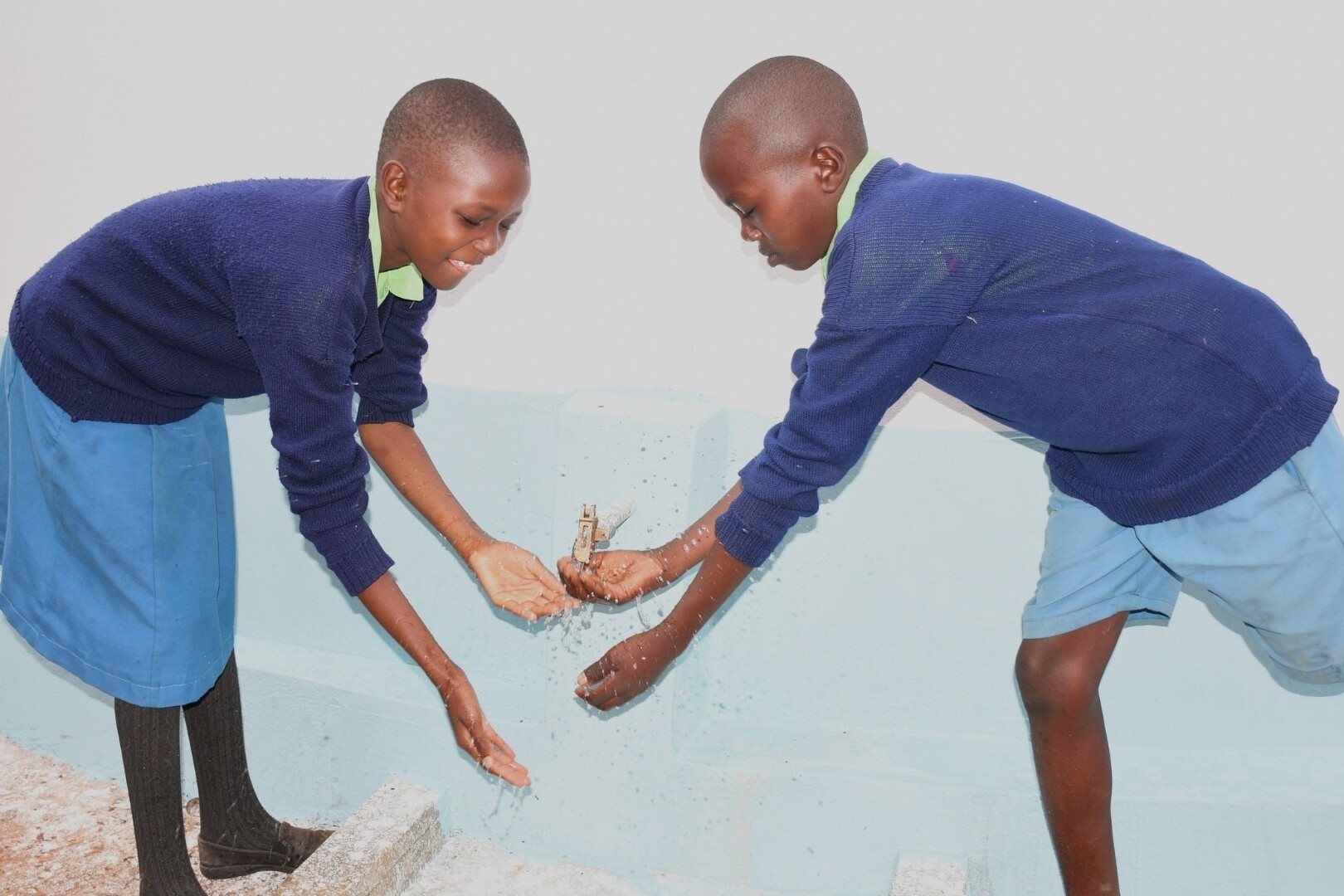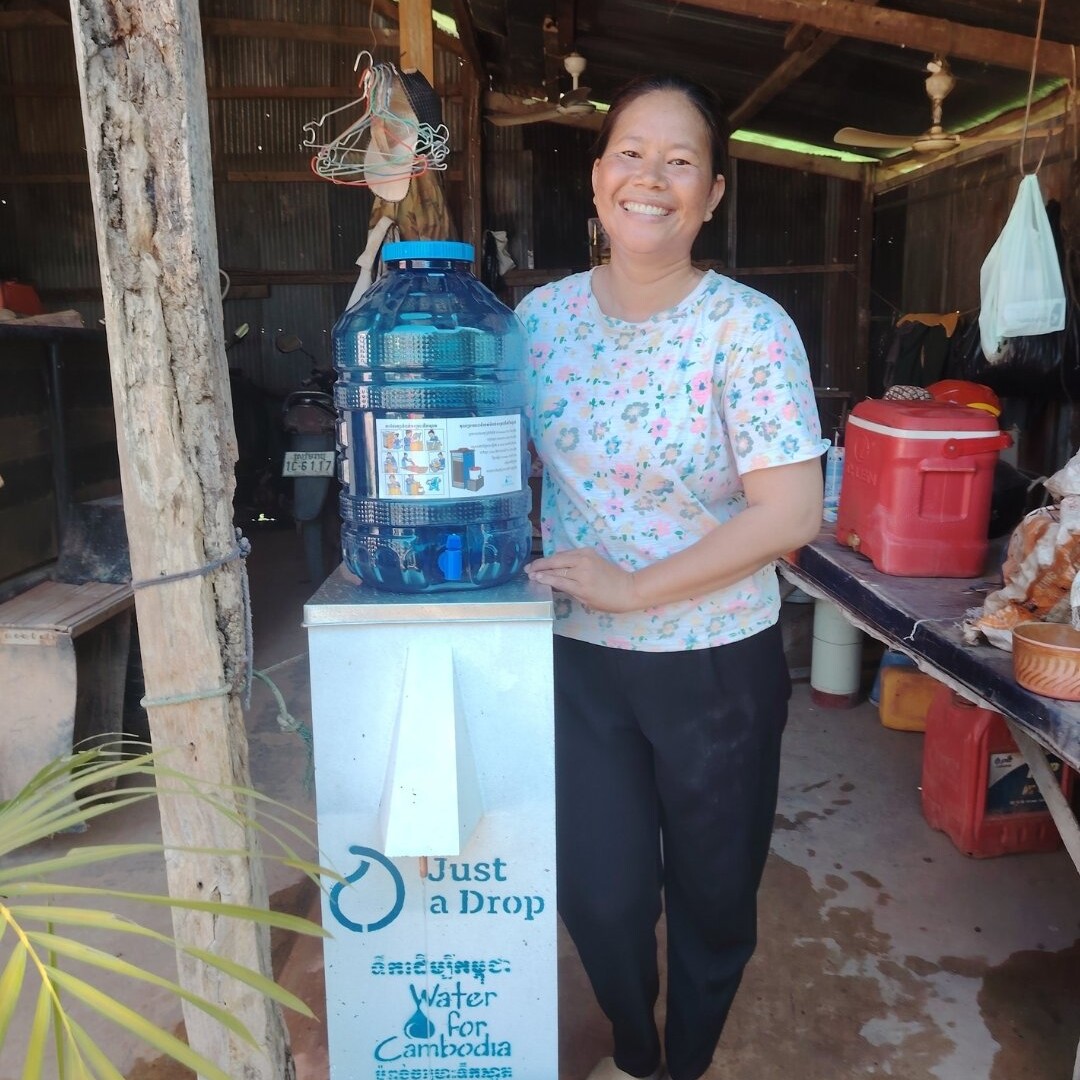
Safe Water Solutions
Drilled Wells
Machinery is used to drill down into the aquifer to extract water stored many metres below the earth’s surface, and a pump is installed for the community to bring this water up through the well.
Rainwater Harvesting Tanks
Rainfall is collected and directed into a rainwater harvesting tank, usually by guttering. Rock catchment systems operate in the same way on a larger scale, with rainfall that flows from a steep rock face directed and collected.
Sand Dams
A dam is built across a seasonal dry river, and during the rainy season when water flows, sand collects behind the dam. Water is then stored in the sand which also acts as a natural filtration system. The water can then be extracted through a well and handpump at the side of the river.
Water Distribution Systems
Water is distributed through a system of pipes. Gravity Fed Water Systems direct the flow of water to a sanitary storage tank. Piped Water Systems work by distributing piped water to a series of taps in a community, school, or health centre.
Spring Protections
A system is built to capture water from a naturally occurring spring source, and the clean water is stored.
Biosand Filters
Biosand filters remove pathogens from water, such as viruses, bacteria, parasites and other contaminants, which are harmful to human health. Biosand filters use layers of size-graded sand and gravel, with a biofilm layer at the top.
